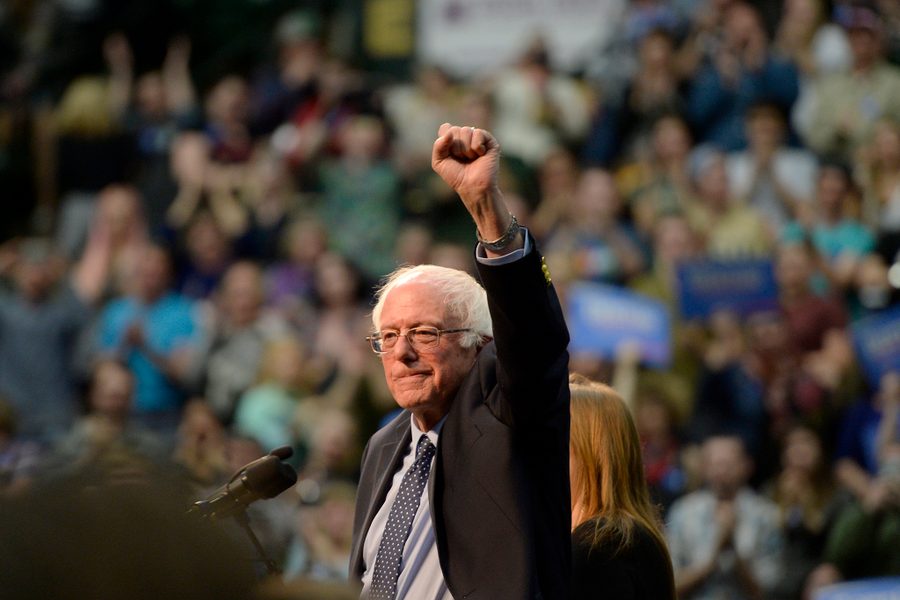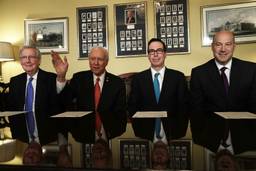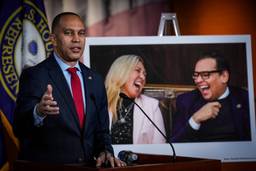Bernie Sanders’ 2020 Run Will Put Concentrated Wealth On Trial
The democratic socialist senator has already pushed the 2020 race far to the left. Now he wants a movement to redistribute economic power to the working class.
Sam Adler-Bell

Bernie Sanders, the independent democratic socialist senator from Vermont, is running for president.
In an interview with CBS This Morning on Tuesday, Sanders told co-host John Dickerson that he planned to launch a massive grassroots effort to transform “the economic and political life of this country,” adding: “We’re gonna win.”
Unlike his last run in 2016, however, this time Sanders will join a large field of Democratic candidates who have expressed support for a suite of his signature policies: Medicare for All, tuition-free college, campaign finance reform and taxing the wealthy to improve the lot of the middle and working classes. Since 2016, the political gravity in the Democratic Party has shifted toward Sanders to an astounding degree. With his entry into the race, the Democratic field is likely to be the most left-wing in modern American history.
How did this happen? How did the Democratic Party’s long, timid hangover from Reaganism suddenly end? How did Sanders, long a political oddity in DC — a self-described socialist throughout the Cold War years, who visited the Soviet Union for his honeymoon in 1988; who resisted the call of Clintonite triangulation; who railed against economic inequality when most Democrats were cozying up to big business — manage to realign the Democratic solar system around his set of solidly left-wing policies?
A common misconception about Sanders’ 2016 campaign was that he “promised” a political revolution — a wave of civic action that would sweep away the forces of reaction and their billionaire backers in DC, inaugurating a new era of egalitarian policymaking. But Bernie’s “political revolution” was never a promise, it was a plea.
Bernie was endlessly criticized for over-promising during his campaign, ignoring the pragmatic policy questions in favor of attractive rhetoric. “You have people, I believe, who do not understand how hard it is to make change,” then Sen. Barney Frank (D-Mass.) said of Sanders supporters in April 2016, “the importance of not just being idealistic, but being sensibly pragmatic and keeping their ideals.”
But contrary to the perception of his centrist critics, the Sanders campaign was the most honest in recent memory. Hillary Clinton’s more incremental demands were no more possible in a GOP-controlled Congress than Sanders’ more ambitious agenda. What Sanders told his supporters was the truth: Without a wholesale reordering of the political status quo — only possible when massive numbers of previously unengaged people take to the streets, the polls and the picket lines — nothing in his agenda could be achieved.
In other words, if you want substantive progressive change, but believe we can get there without a massive social movement, you are the idealist.
This was the lesson of Sanders’ 2016 campaign, one the young crop of new progressive Democrats in Congress led by Alexandria Ocasio-Cortez, Ilhan Omar and Rashida Tlaib has learned. Insofar as “pragmatism” is about efficacy, sometimes offering an uncompromising vision — one which inspires mass participation and grassroots movement energy — is the pragmatic approach. Likewise, in a populist moment, nothing is less pragmatic than an explicit appeal to pragmatism.
Of course, Sanders did none of this by himself. Left electoral strategists (and voters) were looking for a candidate to contest Hillary Clinton’s coronation, if only to push her to the left and introduce some progressive policy ideas to the public. Many of them hoped Elizabeth Warren would run. When Warren declined, the organizers of the “Draft Warren” campaign gravitated toward Sanders instead. These organizers employed a “distributed organizing” model which allowed local activists to participate semi-autonomously in building the Sanders campaign — through social media and in the streets — giving electoral work the feel (and effect) of a mass movement.
Meanwhile, it’s difficult to distinguish between the forces that Sanders generated and those that he effectively harnessed. As evidenced by the success of Donald Trump’s populist appeal — phony as it may be — and the rise of anti-elite sentiment worldwide, the settled neoliberal order is experiencing a global crisis of legitimacy.
Political scientists use the term “alignments” to describe discrete eras of hegemonic rule by one set of political forces and ideas. (“Hegemony” — an academic’s word that aspiring populists should avoid like the plague — simply means having sufficient power in society to define the dominant common sense.) Every alignment is upheld by a set of ideas which justify the domination of one constituency over others.
During the Reagan alignment (which others call “neoliberalism” or, in Britain, Thatcherism), politicians across the spectrum treated as common sense the idea that a “rising tide lifts all boats,” that GDP was the only relevant measure of social health, and that those unable to thrive in a global economy do so out of laziness or some other moral flaw.
Since he began his political career in the 1970s, Sanders has been offering a decidedly alternative vision, rooted in confronting concentrated economic power through grassroots activism. His anti-plutocratic ideas are resonating with Americans today — especially younger and more diverse Americans — because the era in which market fundamentalism and unfettered finance undergird the political consensus is finally over.
When the legitimating ideas of an existing political alignment stop making sense, it signals the end of that alignment. The legitimacy of the existing elite is imperiled — and there opens a possibility to articulate a new common sense.
Sanders was merely the first major politician on the Left to give voice to this progressive alternative when Americans were ready to hear it. Democrats who have already entered the 2020 primary are following his lead. Warren has proposed a 2 percent wealth tax on the “ultra-wealthy,” while Sen. Kirsten Gillibrand has championed a financial transaction tax. Sen. Kamala Harris has endorsed Ocasio-Cortez’s call for a Green New Deal to combat climate change. This is realignment in action.
Despite what some pundits have said, Sanders’ entry into the presidential primary fray doesn’t auger a replay of the 2016 primary. The political ground has shifted beneath our feet. The contest between “pragmatic” supporters of Clinton and “idealistic” supporters of Sanders is over. The narrative never made sense in the first place. Whether or not Bernie Sanders wins the Democratic nomination in 2020, his vision has already redefined its horizons.

I hope you found this article important. Before you leave, I want to ask you to consider supporting our work with a donation. In These Times needs readers like you to help sustain our mission. We don’t depend on—or want—corporate advertising or deep-pocketed billionaires to fund our journalism. We’re supported by you, the reader, so we can focus on covering the issues that matter most to the progressive movement without fear or compromise.
Our work isn’t hidden behind a paywall because of people like you who support our journalism. We want to keep it that way. If you value the work we do and the movements we cover, please consider donating to In These Times.




